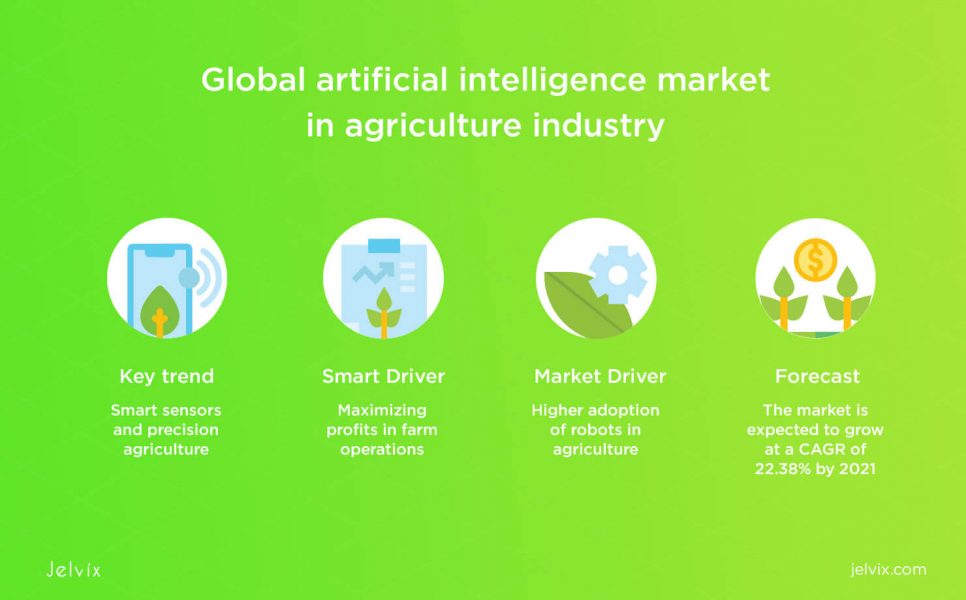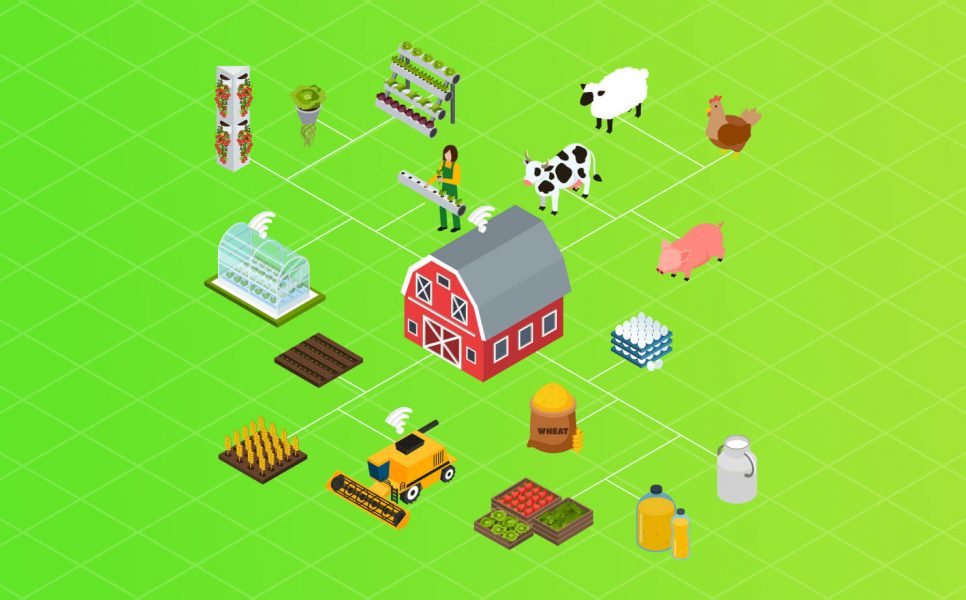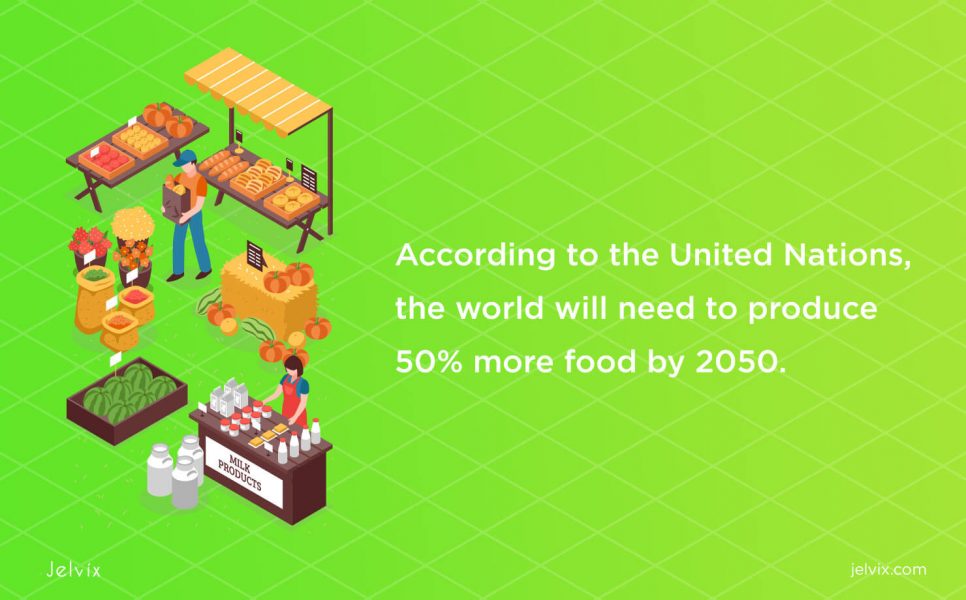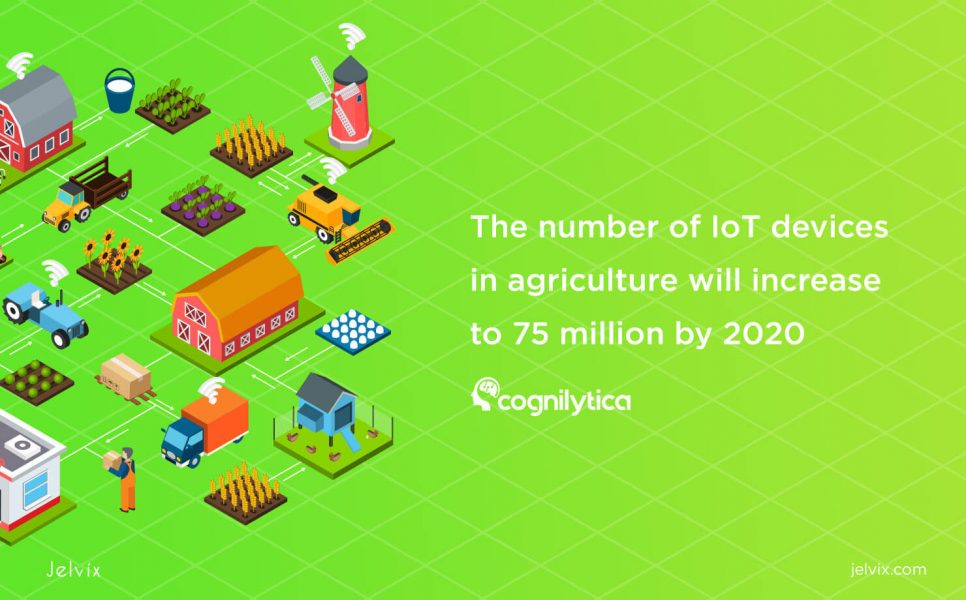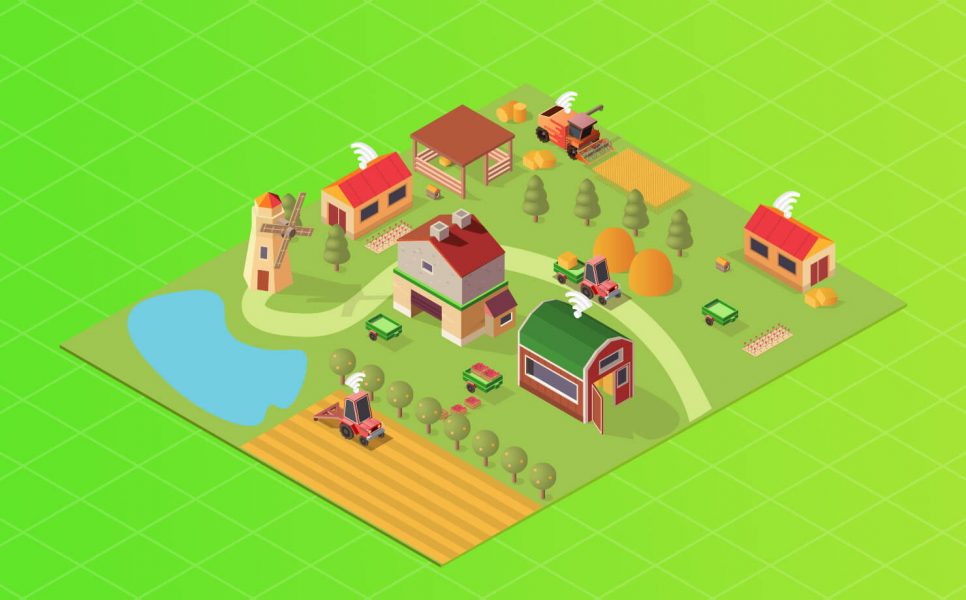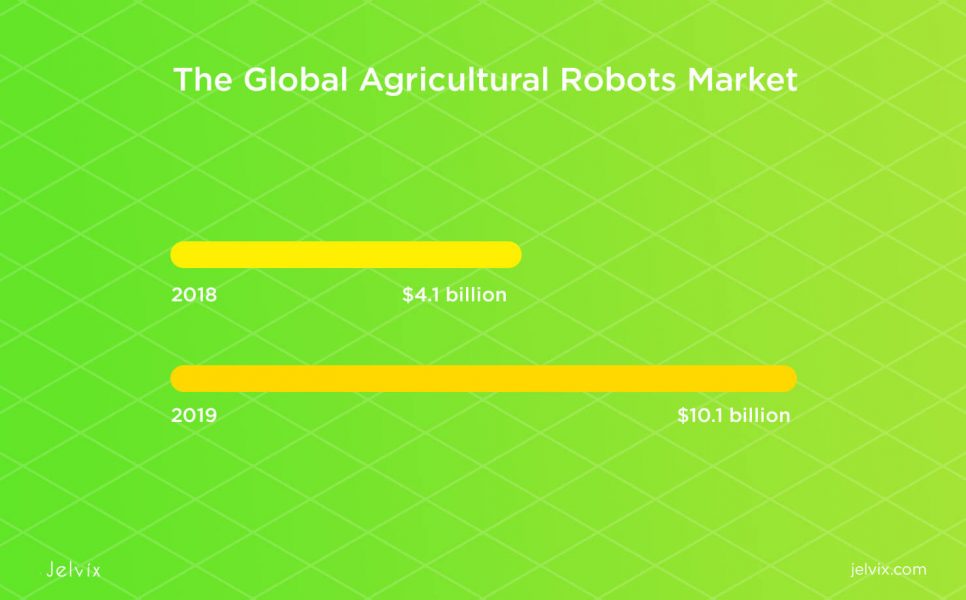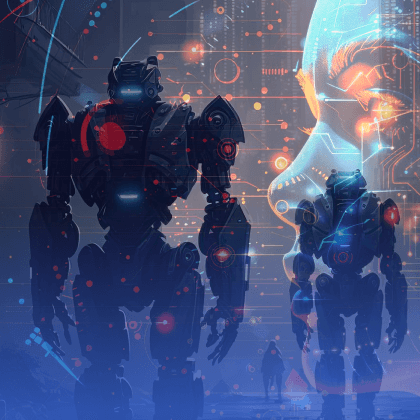Erin Cote, Jelvix Scholarship Program Winner
I grew up surrounded by agriculture in Saskatchewan, Canada. I studied it as an undergrad, and am excited to experience the internationality of it during my graduate studies at Audencia Business School in France. With my degrees, I hope to be able to help the agriculture industry address much of the fear and miscommunication surrounding the amazing science that is allowing us to feed the world. Studying abroad isn’t the easiest thing to do, and I’m grateful to Jelvix for helping to ease some of the burdens through their scholarship!
Plants may not be getting smarter, but science sure is
There is a strange dichotomy in how people view agriculture. Either they picture an old, uneducated soul, puttering around a farm in an open cab tractor with a couple of cows and pigs wandering around, or they envision an evil corporation doing everything they can to squeeze all the profit out of poor abused animals and genetically modified organisms (GMOs). In both of these perceptions, technology and science are demonized within agriculture. Advances are seen as something to be afraid of; something that is unsafe, malicious, and for profit-gain only.
Sure, like any other industry, employing new technology, and specifically, artificial intelligence (AI), will raise profits for those who can use it, but it also has a much further-reaching impact. There isn’t a person on this planet who isn’t a consumer of agriculture, and better technology would benefit every one of them by lowering food costs and decreasing food insecurity. While reducing food insecurity is the furthest reaching aspect of employing AI, producers would also see agronomic benefits of better yields, more accurate field analysis, improved environmental stewardship along with personal benefits of mental health improvements for agricultural industry professionals world-over.
Benefits of employing AI in agriculture
Even though agriculture is a uniquely global industry, theoretically integrating AI into the practices of just one continent’s dryland cropping sphere is enough to demonstrate the social benefit and ethical considerations that quickly arise. From an exclusively North American view, the use of AI could reduce food insecurity in a variety of ways.
Starting from the breeding aspect down to the actual production and transportation of food, AI can improve the process. Already genetic modification provides agriculture with a shorter path to higher-yielding and better quality varieties of grains, pulses, and oil seeds. Employing AI in these operations makes for faster, cheaper sequencing of genomes, and could help eliminate some of the human error in the physical aspects of plant breeding. This quicker access to better genetics will not only create higher yields, but provide producers with plants that are easier to harvest, pest and disease resistant, have higher nutritional content, and can better tolerate environmental stressors.
AI use cases
All of these benefits arise from simply the first step in the industry! Following the move from research to production, artificial intelligence takes on a different role. Here, AI can be used to diagnose crop issues such as nutrient deficiencies, disease outbreaks, weed pressure, or insect damage. Identifying these issues early (and with better accuracy than a human might be able to) would allow producers to mitigate issues as they arise, avoiding yield loss from these factors.
Once an issue is identified, AI can also help solve the problem in a more sustainable and cost-effective way. For example, cameras on sprayers that identify and then spray only the targeted weeds would lower the amount of herbicide sprayed on a field, benefiting the environment and producer alike. Finally, once the crop is out of the field and in the bin, AI could help prevent spoilage of grain in storage through temperature monitoring, visual identification of rotting grain or other impurities, and mechanical separation of these unwanted portions. With a lower chance of spoilage, grain can be moved much farther with lower risk.
All of these considerations lead to higher yields of better quality grain that can then flow forward into food processing or animal production chains. As AI is developed mechanically into self-driving machineries, such as semi-trailers, grain carts, and more, transportation of grain will benefit as well.
Lowering the cost of food
It is no secret that the world population is growing, and already millions of people around the world are starving, and many more are food insecure— meaning that even if a person is not on the brink of starvation, they aren’t entirely sure where their next meal is going to come from. While starvation may not be an outstanding concern in most North American or European countries, food insecurity definitely is.
The yield improvements that the use of AI could provide in North American cropping systems alone could have a drastic impact on lowering the cost of food globally. Grain production is a highly competitive marketplace, and as technology is largely adopted among producers, this competition drives prices lower and pushes savings towards consumers. These savings, paired with lower spoilage during the movement of food from one location to another, battles the issue of food insecurity on multiple levels.
Farmers’ mental health
Beyond increased yields and more efficient transportation of food, AI in agriculture would be incredibly beneficial for the mental health of farmers and agriculture industry professionals. Only recently have mental health concerns started to take the spotlight in any industry. Agriculture is particularly bad for fostering stressful working conditions that producers are expected to endure. The busy season stretches from the moment the snow melts until it falls again, and farmers put in long hours every day to ensure that the crop is planted in time and issues are handled immediately. Plants do not acknowledge weekends or holidays, and the weather doesn’t work on a nine-to-five schedule. If a field needs to be sprayed for disease and the only time to get to it before the rain is at 3 am after an 18 hour day, then that’s when it needs to be done.
Financially, farming is also incredibly high risk: every year, producers pour an obscene amount of money into the ground in the form of seed, fertilizer, machinery, and manpower. Then they are at the whim of the elements, whether that crop will grow and produce anything usable at the end of the year. Will there be enough rain? Too much rain? Hail? Damaging storms? Insects? Weeds? Disease? The concerns are endless, and they take a toll on the producer shouldering the financial and emotional burden.
Using AI for strategic input of variables would allow the farmer to know that they are not guessing at what their crop requires, and are giving it the best chance to survive and flourish. Better crop varieties developed quickly with technology would provide insurance against pests, disease, and environmental stress. Mechanical AI that allows a farmer to reduce the amount of prolonged driving of large machinery would help ensure that producers are able to have a healthy work-life balance and allow them to take care of themselves, even in the busy season. The reduction of risk and unhealthy working conditions with the use of AI would lower rates of suicide, depression, and poor mental health among farmers—all highly stigmatized medical issues that aren’t widely addressed in the industry or the community.
Concerns of employing AI in agriculture
While there are many social benefits to employing AI in the agriculture industry, it is also important to acknowledge the negatives. Already, modern food production inspires fear in many mainstream consumer markets. People worry about pesticide use, genetic modification, and the movement away from what they see as the typical family farm.
Further employing AI in this industry is very likely to inspire public backlash based on this fear. Food is a very emotional commodity; it’s what people feed their family, their friends, and themselves. It is also something that many communities have very little control over. Living in a city means having almost no opportunity to grow food personally — forcing people to rely entirely on others to handle this vital task. Of course, everyone wants their food to be grown in the safest way possible, and when people learn about genetic modification from Facebook, it is neither accurate nor glamorous.
As AI becomes more prominent in agriculture, it will further push food production into the realm of science and technology in the mind of the public. And food production is a science! But that isn’t how people feel about it, or want to feel about it. Integration of science and technology with traditional food production methods evokes images of Soylent Green and other science-fiction food production horrors, leaving a generalized social distaste for the technology necessary to feed 7.5 billion mouths in the collective unconscious. They feel safer thinking their food was grown without modern technology than bred in a lab and produced using the best technology and practices.
It is hard to mitigate this fear. This is where the ethical implications of employing AI arise. If the use of this technology is to be accepted by consumers, every piece of it must first go through rigorous safety regulations, and companies must be extremely transparent about what methodology they are using at every step of the food chain. Even after regulations are in place and safety standards have been met, the ethical implementation of AI in the industry should include consumer outreach by large corporations and small producers alike in order to debunk false claims that industry practices are unsafe. If consumers do not understand the safety regulations in place, it is hard to know if those regulations are strict enough or if they are being followed. Misuse of AI without appropriate transparency will lead to distrust of regulatory bodies and the industries they oversee.
The main ethical concern of employing AI in the industry can be traced back to the bottom line: money. If the pursuit of profit casts safety and sustainable agricultural practices to the sideline, the industry AI is no longer happening ethically. Producers and agriculture companies alike must embrace their role in making sure that the layperson understands what is done to ensure that regulations are strictly met within the industry, and what these regulations mean about the food being put on their plate. Those in the industry must be the ones to show people they are not casting aside safety for profit at the consumers’ expense.
The pursuit of profit with AI could also create a greater chance of physical injury when it is employed in a mechanical nature. Self-driving combines, semi-trailers, and other large equipment could cause incredible damage and injury if they are not properly regulated. As AI technology progresses, safety must be a primary concern in its development or the benefits will not outweigh the risks. In a less obvious light, sustainable agriculture practices must also be considered. The land available for dryland cropping is not expanding, and abusing available technology for increased profits could greatly degrade the land that we now have. While AI may make certain crops and practices more profitable, regulations must be put in place to ensure the larger focus of AI is on sustainability rather than simple profit.
Read more about the most common software development strategies and take a look at their benefits and drawbacks.
Conclusion
Agriculture is an industry that has undergone an incredible transformation in the past several decades, and it will continue to do so with the employment of AI. The use of artificial intelligence could help the industry tackle the immense issue of food shortages and insecurity. It could help reduce depression among food producers, who take on an immense amount of risk every spring that they decide to put a crop in the ground. AI would impact every level, from research to production, storage, and transportation. This essay only looked at broad land cropping in North America, but if AI stretches further (from the cattle industry in Australia to the fruit production in Chile, to the coffee plantations in Columbia) and if it is implemented ethically (pursuing things such as sustainability and safety above profit), the resulting benefits would be widespread to everyone who consumes the products of agriculture every day.
Need a certain developer?
Use our top talent pool to get your business to the next level.



